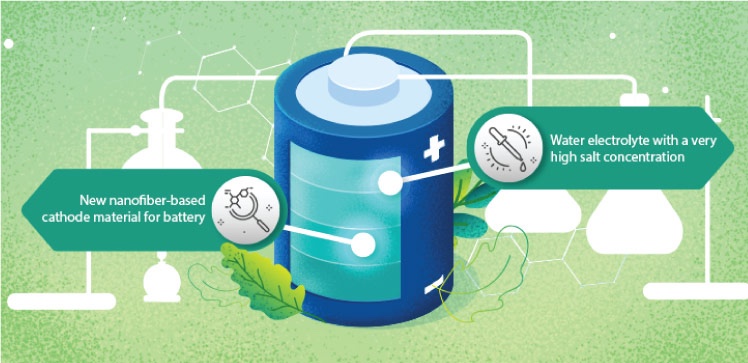Researchers in Saudi Arabia say they have developed a new zinc-ion battery chemistry that they hope will deliver large-scale energy storage that is cheaper, safer, and more environmentally friendly than the commonly used lithium-ion batteries.
The dominant battery technology currently in use across the globe is lithium-ion – which is used in everything from mobile phones and laptop computers all the way up to electric vehicles and large-scale standalone energy storage.
However, lithium-ion are reliant upon several key minerals which can be either in short supply, or expensive – such as cobalt, lithium, nickel, and copper.
The hunt is on, then, to develop new battery chemistries that make use of more abundant elements, and which also increase battery charge rates, stability, storage, and safety.
One of those potential battery chemistries is zinc-ion, which have the potential to yield higher capacity, lower costs, and reduce potential toxicity.
Another added benefit of zinc-ion batteries is the fact that many of the manufacturing processes in use for lithium-ion batteries can be used to make zinc-ion batteries, reducing the need for separate manufacturing facilities.
Unfortunately, zinc-ion batteries have suffered from a long-standing instability which has seen rapid degradation during use.
According to Yunpei Zhu, a research scientist at King Abdullah University of Science and Technology (KAUST) in Saudi Arabia, “issues including low cycling stability and fast self-discharge have prohibited practical applications of aqueous zinc-ion batteries.”
“Both of these issues are related to the design of electrolytes and electrode materials,” adds Zhu. The water-based electrolyte causes problems at both electrodes of the battery, resulting in damaging side reactions at the anode and rapid dissolution of the cathode.
In an effort to combat the degradation of zinc-ion batteries caused by the water-based electrolytes, the team from KAUST, led by Yunpei Zhu, developed a water electrolyte with a very high salt concentration.
The increased level of salt ions in the electrolyte solution serve to bind the surrounding water molecules, which in turn means that there are fewer free water molecules available to damage the battery electrodes.
Zinc-based salts typically result in limited solubility in water, so the KAUST team added sodium to produce a highly concentrated electrolyte of zinc perchlorate and sodium perchlorate.
“We found this combination delivers very high solubility to suppress water activity, without lowering the key attributes of zinc-ion batteries, including their high ionic conductivity, safety or environmental friendliness,” said Zhu.
In addition to the new water-based electrolyte, the KAUST team also developed a new nanofiber-based cathode material for batteries.
“The nanofiber morphology enhances ion diffusion, which ensures faster charge and discharge rates of the aqueous Zn-ion batteries,” said Husam Alshareef, Professor of Material Science and Engineering at KAUST and leader of the research group.
“This combination of electrode and electrolyte potentially solves the shortcomings of conventional aqueous Zn-ion batteries.”
The results were immediately promising, with the team witnessing almost no capacity decay over as many as 2,000 charge cycles.
According to the conclusions of the research group in their article published in the journal Energy & Environmental Science – entitled “Concentrated dual-cation electrolyte strategy for aqueous zinc-ion batteries” – it shows lower cost, higher ionic conductivity, and decreased toxicity” and indicates “long cycling stability, enhanced rate capability, and suppressed self-discharge.”










